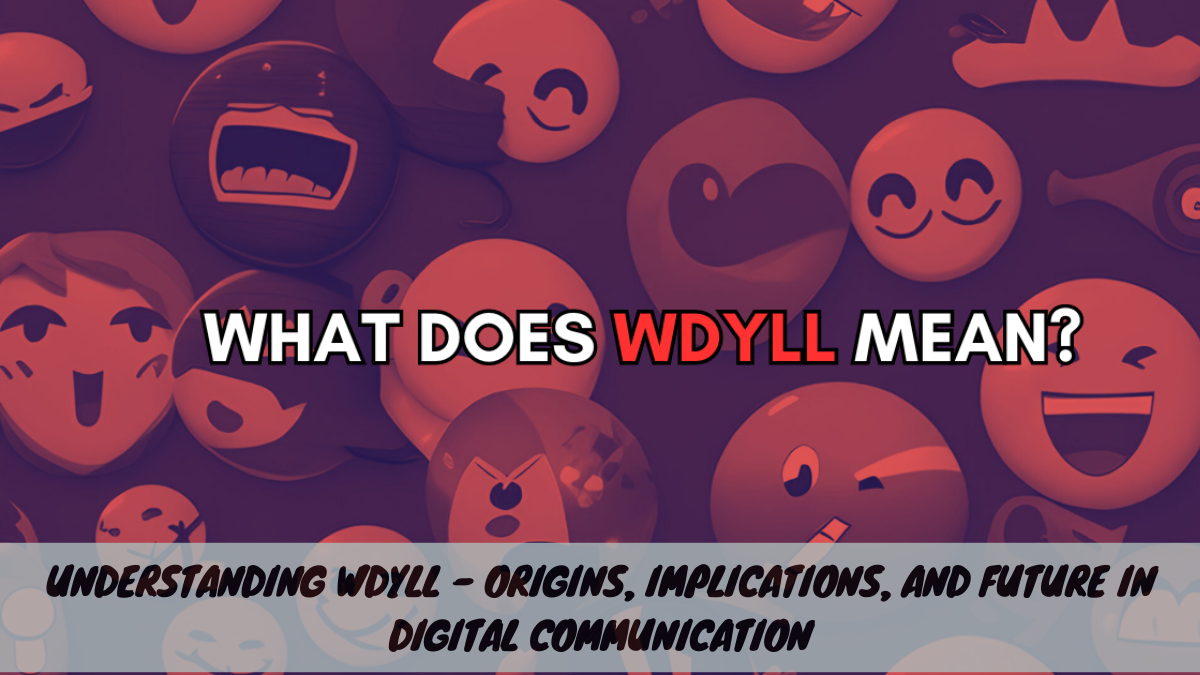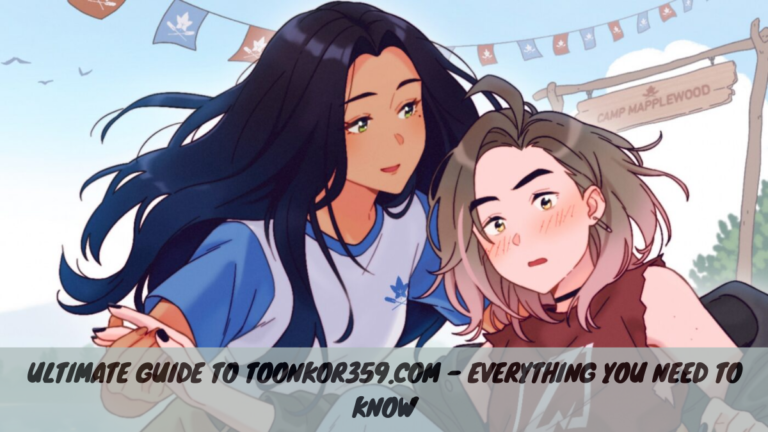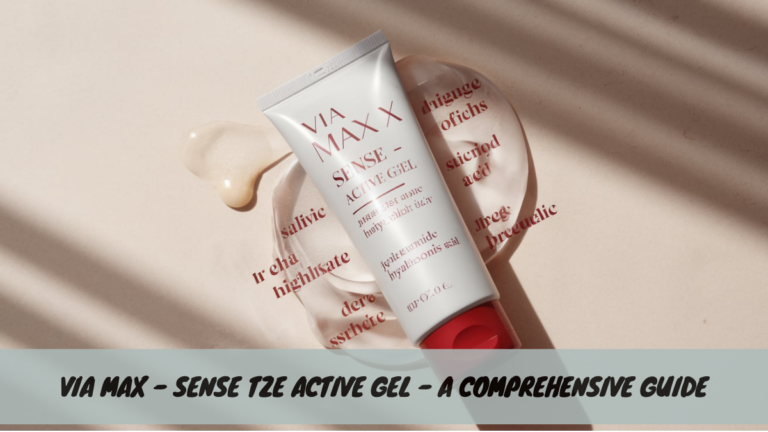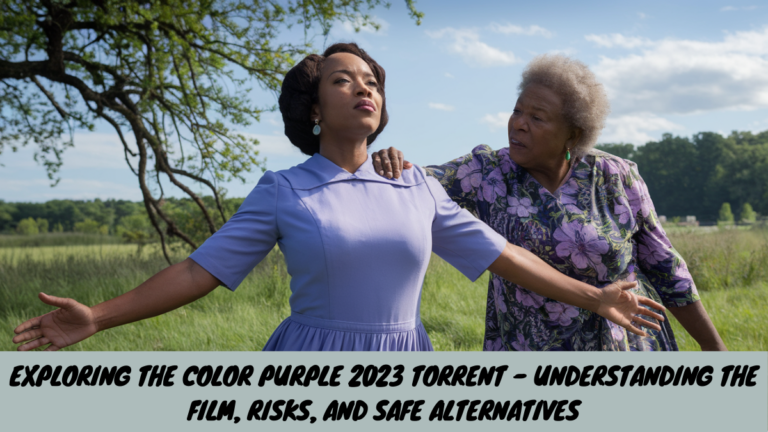Understanding WDYLL – Origins, Implications, and Future in Digital Communication
Introduction
In today’s digital landscape, acronyms and shorthand terms have become integral to online communication. Among these, “WDYLL” stands out as a phrase that, while not universally recognized, holds significant cultural relevance, especially in social media and online forums. “WDYLL,” which stands for “What Do You Look Like,” is a term that people often use in virtual interactions to inquire about someone’s appearance. This article will dive deep into the origins, uses, implications, and social impact of the term “WDYLL,” providing a comprehensive understanding for readers.
1. What Does “WDYLL” Mean?
1.1 Understanding the Acronym
“WDYLL” is an acronym for the phrase “What Do You Look Like?” It is often used in online conversations where individuals want to know about another person’s physical appearance. The term gained traction in the early days of internet forums and chat rooms, evolving into a commonly used shorthand in various digital platforms.
1.2 Usage in Online Communication
In the context of online communication, “WDYLL” can be seen in text messages, social media platforms, and online dating apps. It is a quick and informal way to ask someone to describe themselves or share a picture. While seemingly straightforward, its usage can carry different connotations depending on the context, tone, and relationship between the individuals involved.
2. The Evolution of “WDYLL”
2.1 Early Days of the Internet
“WDYLL” emerged during the early days of the internet when chat rooms and forums were the primary means of online social interaction. In these text-based environments, where visual representation was limited, asking “What Do You Look Like?” became a common way for users to satisfy their curiosity about the people they were interacting with.
2.2 Rise of Social Media
With the advent of social media platforms like Facebook, Instagram, and Twitter, where users could share images and videos, the usage of “WDYLL” evolved. It became less about direct requests for photos and more about subtle prompts to share more visual content. On platforms like Instagram, where visual identity plays a significant role, “WDYLL” is sometimes used in captions or comments to encourage users to share selfies or other images.
2.3 Modern Usage
Today, “WDYLL” is still in use, though it has become more nuanced. With the proliferation of visual-based social media, the direct question of “What Do You Look Like?” is often implied rather than explicitly asked. However, “WDYLL” remains relevant in certain contexts, particularly in anonymous or semi-anonymous platforms like Reddit, Discord, and certain niche online communities.
3. Social and Psychological Implications of “WDYLL”
3.1 The Pressure to Present an Image
The question “What Do You Look Like?” can create a sense of pressure, especially in a world where appearance is often tied to social value. When someone asks “WDYLL,” it can invoke feelings of self-consciousness or insecurity, especially in individuals who may feel that their appearance does not meet societal standards.
3.2 Impact on Self-Esteem
The emphasis on appearance in online interactions, facilitated by terms like “WDYLL,” can have both positive and negative effects on self-esteem. On one hand, sharing images and receiving positive feedback can boost confidence. On the other hand, the constant comparison to others and the fear of judgment can lead to anxiety and lower self-esteem.
3.3 The Role of Anonymity
In anonymous online spaces, asking “WDYLL” can serve as a bridge between the digital and physical worlds. It can also, however, be a source of tension as the anonymity of the internet allows individuals to ask for personal information without revealing their own identities. This dynamic can lead to uncomfortable situations or even harassment in some cases.
4. Cultural Differences and Perceptions
4.1 Global Usage of “WDYLL”
The usage and perception of “WDYLL” can vary significantly across different cultures. In some cultures, asking about someone’s appearance directly may be considered impolite or intrusive, while in others, it may be seen as a normal part of getting to know someone.
4.2 Gender Dynamics
The question “What Do You Look Like?” can carry different weight depending on the gender of the individuals involved. Women, in particular, may experience “WDYLL” as an unwanted or objectifying question, especially in contexts where appearance is overly scrutinized.
4.3 Age and Generation Gaps
Different generations also perceive “WDYLL” differently. Younger generations, who are more accustomed to visual-based social media, may view the question as a natural part of online communication. In contrast, older generations, who grew up with more text-based communication, may find it more invasive or unnecessary.
5. The Role of “WDYLL” in Online Dating
5.1 Importance in Online Profiles
In the world of online dating, appearance often plays a crucial role. Asking “WDYLL” or its equivalent is common as individuals seek to assess physical attraction early in the conversation. Profiles on dating apps frequently include pictures, reducing the need to explicitly ask this question.
5.2 Ethical Considerations
The ethical implications of asking “WDYLL” in a dating context are complex. While appearance is undeniably important in romantic attraction, reducing someone to their looks can be problematic. It’s important for users to navigate these conversations with sensitivity and respect for the other person’s comfort level.
5.3 Catfishing and Misrepresentation
“WDYLL” also plays a role in identifying potential catfishing scenarios—where someone misrepresents their appearance online. Asking for a recent picture can help verify that the person is who they claim to be, though it also raises issues of trust and authenticity in online interactions.
6. How to Respond to “WDYLL”
6.1 Assessing the Context
Before responding to “WDYLL,” it’s important to assess the context in which the question is asked. If it’s in a casual conversation with someone you know well, it may be a lighthearted request. However, in more formal or unfamiliar settings, you may want to consider why the person is asking.
6.2 Setting Boundaries
It’s okay to set boundaries if you’re uncomfortable sharing your appearance. You can politely decline or redirect the conversation. For example, you might say, “I prefer to keep my appearance private, but I’d love to chat more about [other topic].”
6.3 Sharing Safely
If you do decide to share an image, ensure it’s something you’re comfortable with and that you trust the person you’re sharing it with. It’s also a good idea to use platforms with privacy settings that allow you to control who can view your content.
7. “WDYLL” in the Context of Online Safety
7.1 Risks of Sharing Personal Images
Sharing personal images online can expose you to various risks, including identity theft, harassment, and misuse of your photos. It’s important to be aware of these risks and take steps to protect yourself.
7.2 Best Practices for Online Privacy
To maintain privacy and safety online, consider the following tips:
- Use Privacy Settings: Adjust your social media privacy settings to control who can see your posts and images.
- Be Cautious of Strangers: Avoid sharing personal images with people you don’t know well, especially in anonymous or semi-anonymous settings.
- Think Before You Post: Consider the long-term implications of sharing images online. Once something is on the internet, it can be difficult to remove.
7.3 Responding to Unwanted Requests
If someone persistently asks “WDYLL” in a way that makes you uncomfortable, it’s important to know how to respond. You can:
- Politely Decline: Let them know you’re not comfortable sharing your appearance.
- Ignore or Block: If the person continues to pressure you, consider ignoring the request or blocking them.
- Report if Necessary: On platforms that allow it, you can report the individual for inappropriate behavior.
8. Alternatives to “WDYLL”
8.1 Focusing on Personality
Instead of asking someone “WDYLL,” consider focusing on getting to know their personality, interests, and values. Questions like “What do you enjoy doing in your free time?” or “What are your hobbies?” can lead to more meaningful conversations.
8.2 Building Connections Beyond Appearance
Building connections based on shared interests and values rather than appearance can lead to more fulfilling and lasting relationships. It also helps create a more inclusive and less appearance-focused online culture.
9. The Future of “WDYLL” in Digital Communication
9.1 Evolving Social Norms
As social norms around online communication continue to evolve, the use and perception of “WDYLL” may change. With growing awareness of the impact of appearance-focused interactions, we may see a shift towards more holistic approaches to getting to know people online.
9.2 Technological Advancements
Advancements in technology, such as virtual reality and augmented reality, may also influence the future of “WDYLL.” As these technologies make it easier to create and share lifelike representations of ourselves, the need to ask “What Do You Look Like?” may diminish, or the question may take on new forms.
9.3 The Role of AI and Automation
AI and automation may also play a role in how “WDYLL” evolves. For example, AI could be used to generate images or avatars based on text descriptions, offering new ways for people to share aspects of their appearance without revealing their actual photos.
10. Frequently Asked Questions
10.1 What Does “WDYLL” Stand For?
“WDYLL” stands for “What Do You Look Like?” It is a shorthand used in online communication to ask someone about their physical appearance.
10.2 Where is “WDYLL” Commonly Used?
“WDYLL” is commonly used in text messages, social media, online forums, and dating apps. It is particularly prevalent in environments where visual representation is limited or where individuals are getting to know each other online.
10.3 Is It Rude to Ask “WDYLL”?
The perception of whether “WDYLL” is rude depends on the context and the relationship between the individuals involved. In some cases, it may be seen as a harmless question, while in others, it may be considered intrusive or objectifying.
10.4 How Should I Respond If Someone Asks Me “WDYLL”?
If someone asks you “WDYLL,” you can choose to share an image or politely decline. It’s important to do what makes you feel comfortable and to be aware of the potential risks of sharing personal images online.
10.5 Can “WDYLL” Be Used in a Positive Way?
Yes, “WDYLL” can be used in a positive way, especially in contexts where there is mutual respect and trust. For example, it can be a way to share a part of yourself with someone you’re getting to know better.
Conclusion
“WDYLL” is a phrase that, while seemingly simple, carries with it a range of implications depending on its context. Understanding the history, usage, and social impact of “WDYLL” allows us to navigate online interactions more thoughtfully and responsibly. As digital communication continues to evolve, it’s essential to remain mindful of how we use and respond to terms like “WDYLL,” always prioritizing respect, privacy, and inclusivity in our online interactions. By doing so, we contribute to a more positive and supportive online community.







